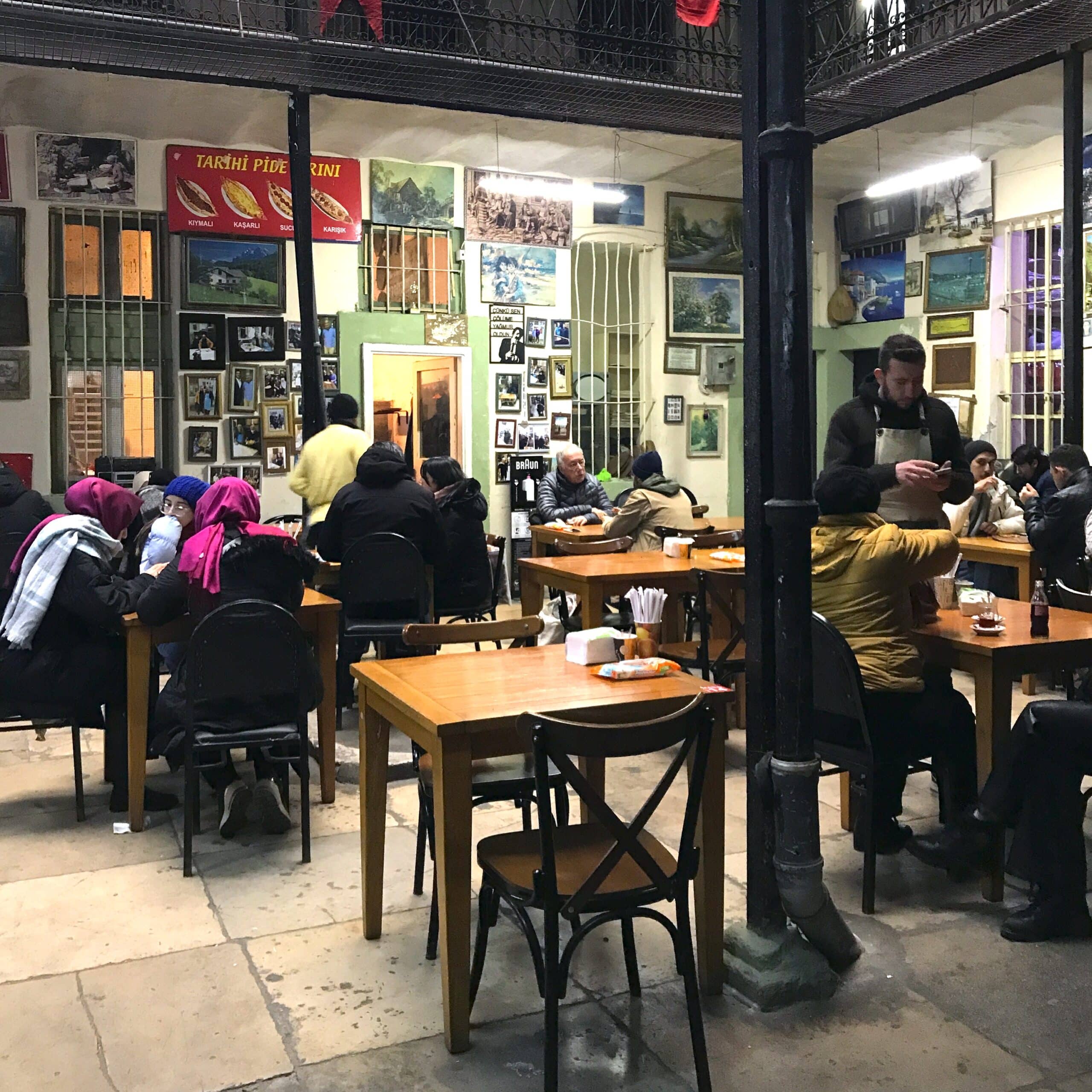🇺🇸 EN
🇹🇷 TR
🇺🇸 EN
Ani Ruins, located 42 kilometers from Kars on the Turkish-Armenian border, is a site steeped in rich history and cultural significance. This ancient city, continuously inhabited from the Early Iron Age to the 16th century, served as a vital trade, religious, and military center. The ruins reflect a diverse cultural heritage, featuring mosques, churches, and fire temples coexisting in a region that has been home to many faiths. Known as the “City of 1001 Churches” and the “City of Forty Doors,” Ani’s historical and architectural wealth is awe-inspiring.
The Mythological Roots of Ani
The name Ani has its roots in Armenian mythology. It is derived from Anahit, the daughter of Aramazd, the father of the gods. Anahit, meaning “golden hair” or “golden hand,” was revered for her beauty and divine qualities. Legend has it that everyone who looked at Anahit would exclaim “Ani!” meaning “that” or “the most beautiful” in Armenian. The region was thus named Ani in honor of this myth.
A Hub of History and Trade
Ani was the site of the first establishment of the Armenian kingdom and played a crucial role in a vast trade network stretching from the Caucasus to Central Asia and China along the Silk Road. Its strategic location and the wealth of resources made it a bustling center of commerce and culture.
UNESCO World Heritage Site
Since 2016, Ani Ruins has been listed as a UNESCO World Heritage site, recognizing its global cultural and historical significance. The designation helps to preserve and protect this invaluable site for future generations.
Exploring Ani Ruins
Visitors to Ani can explore a range of fascinating structures, each telling a story of the city’s diverse past:
- The Cathedral of Ani: Also known as the Church of the Holy Mother of God, this massive structure exemplifies the grandeur of Armenian architecture.
- The Church of St. Gregory: There are multiple churches dedicated to St. Gregory, each with unique architectural features and historical significance.
- The Mosque of Manuchihr: An important symbol of Ani’s Islamic heritage, it is believed to be the first mosque built by the Seljuks in Anatolia.
- The City Walls: The impressive fortifications showcase the city’s military importance and the advanced engineering skills of its inhabitants.
Practical Information
- Location: Ani Ruins are situated in the Kars Province, close to the Turkish-Armenian border.
- Accessibility: The site is accessible by road from Kars, and there are guided tours available for a more in-depth exploration of the ruins.
- Opening Hours: Typically open daily, but it’s advisable to check current visiting hours and any travel advisories before planning a visit.
You May Also Like
- Kars Castle: Overlooking the city of Kars, this medieval fortress offers stunning views and a glimpse into the region’s military history.
- Lake Çıldır: A beautiful, serene lake perfect for outdoor activities such as fishing and boating.
- The Armenian Church of the Holy Cross on Akdamar Island: Located in Lake Van, this church is a masterpiece of Armenian religious architecture.
- Mount Ararat: The legendary resting place of Noah’s Ark, this majestic mountain is a must-see for adventure enthusiasts and history buffs alike.
🇹🇷 TR
Altın Saçlı Tanrıça: Ani Harabeleri
Ani Harabeleri, Kars’a 42 kilometre uzaklıkta, Türkiye-Ermenistan sınırında yer alan, zengin tarihi ve kültürel önemi olan bir yerdir. Erken Demir Çağı’ndan 16. yüzyıla kadar sürekli olarak iskan edilen bu antik şehir, önemli bir ticaret, dini ve askeri merkez olarak hizmet vermiştir. Harabeler, birçok inanca ev sahipliği yapan bu bölgede cami, kilise ve ateş tapınaklarının bir arada bulunmasını yansıtmaktadır. “1001 Kilise Şehri” ve “Kırk Kapılı Şehir” olarak bilinen Ani, tarihi ve mimari zenginliği ile büyüleyicidir.
Ani’nin Mitolojik Kökenleri
Ani adı, Ermeni mitolojisinden gelmektedir. Anahit, tanrıların babası Aramazd’ın kızının adıdır. Anahit, “altın saçlı” veya “altın el” anlamına gelir ve güzelliği ve ilahi nitelikleri ile tanınır. Efsaneye göre, Anahit’i gören herkes “Ani!” yani Ermenice “o” veya “en güzel” anlamına gelen sözü haykırırdı. Bu nedenle bu bölge Ani olarak adlandırılmıştır.
Tarih ve Ticaretin Merkezi
Ani, ilk Ermeni krallığının kurulduğu yer olup, İpek Yolu boyunca Kafkasya’dan Orta Asya ve Çin’e uzanan geniş bir ticaret ağında önemli bir rol oynamıştır. Stratejik konumu ve zengin kaynaklarıyla hareketli bir ticaret ve kültür merkezi olmuştur.
UNESCO Dünya Mirası Alanı
2016 yılından bu yana Ani Harabeleri, UNESCO Dünya Mirası listesinde yer almakta olup, küresel kültürel ve tarihi önemini tanımaktadır. Bu unvan, bu değerli alanın gelecek nesiller için korunmasına yardımcı olmaktadır.
Ani Harabelerini Keşfetmek
Ani’yi ziyaret edenler, şehrin çeşitli geçmişini anlatan bir dizi büyüleyici yapıyı keşfedebilir:
- Ani Katedrali: Kutsal Meryem Ana Kilisesi olarak da bilinen bu muazzam yapı, Ermeni mimarisinin ihtişamını örneklemektedir.
- St. Gregory Kilisesi: St. Gregory’e adanmış birçok kilise vardır, her biri benzersiz mimari özelliklere ve tarihi öneme sahiptir.
- Manuchihr Camii: Ani’nin İslami mirasının önemli bir sembolü olan bu caminin, Anadolu’da Selçuklular tarafından inşa edilen ilk cami olduğu düşünülmektedir.
- Şehir Surları: Etkileyici tahkimatlar, şehrin askeri önemini ve sakinlerinin ileri mühendislik becerilerini göstermektedir.
Pratik Bilgiler
- Konum: Ani Harabeleri, Türkiye-Ermenistan sınırında, Kars ilinde yer almaktadır.
- Erişilebilirlik: Harabeler Kars’tan karayoluyla erişilebilir olup, bölgeyi daha derinlemesine keşfetmek için rehberli turlar mevcuttur.
- Ziyaret Saatleri: Genellikle her gün açıktır, ancak ziyaret saatlerini ve seyahat uyarılarını planlamadan önce kontrol etmekte fayda vardır.
Bunlar da İlginizi Çekebilir / You May Also Like
- Kars Kalesi: Kars şehrini tepeden gören bu ortaçağ kalesi, muhteşem manzaralar ve bölgenin askeri tarihi hakkında bir bakış sunmaktadır.
- Çıldır Gölü: Balıkçılık ve tekne gezisi gibi açık hava etkinlikleri için mükemmel, huzurlu bir göl.
- Akdamar Adası’ndaki Kutsal Haç Ermeni Kilisesi: Van Gölü’nde bulunan bu kilise, Ermeni dini mimarisinin bir başyapıtıdır.
- Ağrı Dağı: Nuh’un Gemisi’nin efsanevi dinlenme yeri olan bu heybetli dağ, macera tutkunları ve tarih meraklıları için mutlaka görülmesi gereken bir yerdir.





